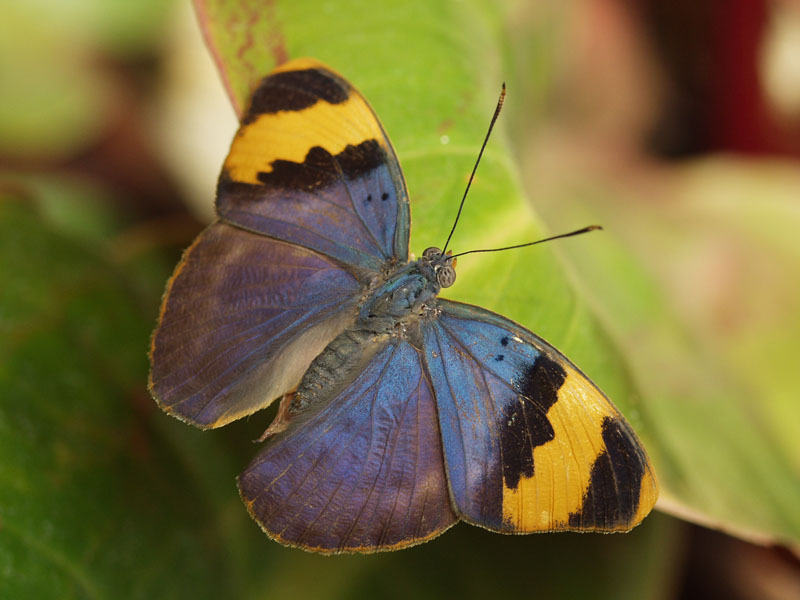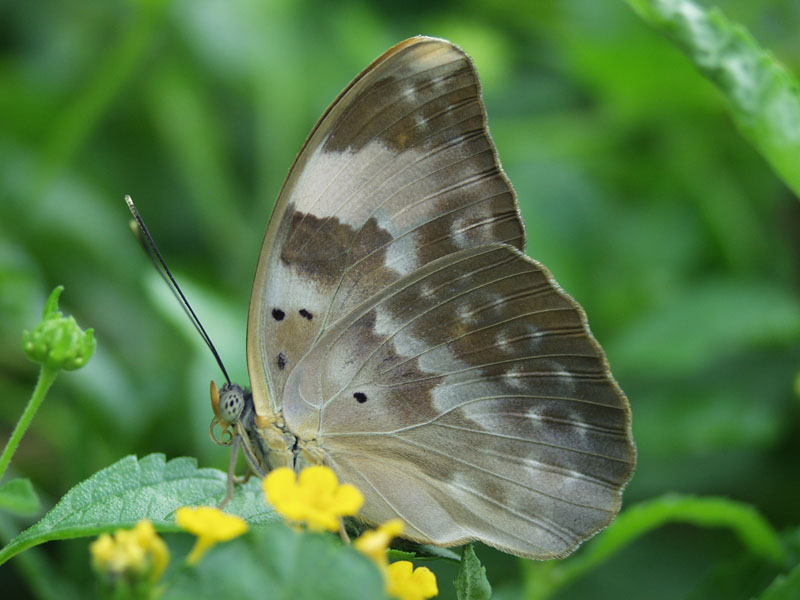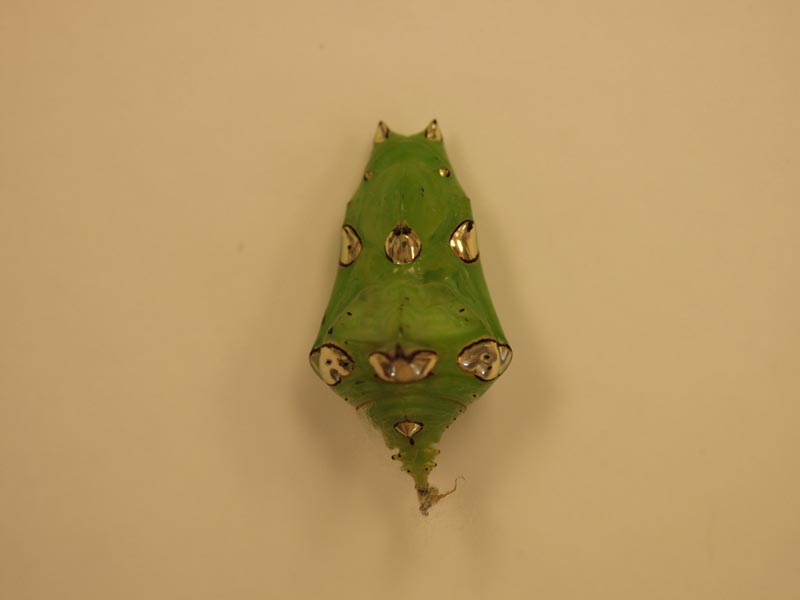


As an adult the Gold-banded Forester feeds on rotting fruit and tree sap.
The origin of the genus Euphaedra is currently unknown. In Greek neo is new and phron is mind.
Gold-banded Foresters are found in very dense tropical forests. Occasionally, they will venture out into a clearing but these visits are usually short.
Males perch on a structure waiting for receptive females to pass along. After mating females look for host plants to lay their eggs on. The larvae hatch from their eggs and feed on the host plants. The pupa is formed on a woody structure in the proximity of the host plant.
Adults can be found year round with the largest populations observed between February and July.
As adults, Gold-banded Foresters can have a much longer lifespan than the two week average associated with other species of butterflies. In the literature, there are records of individuals of other species in the genus Euphaedra living over 200 days. It is believed that the longevity of this species, in part, has to do with their diet of rotting fruit.